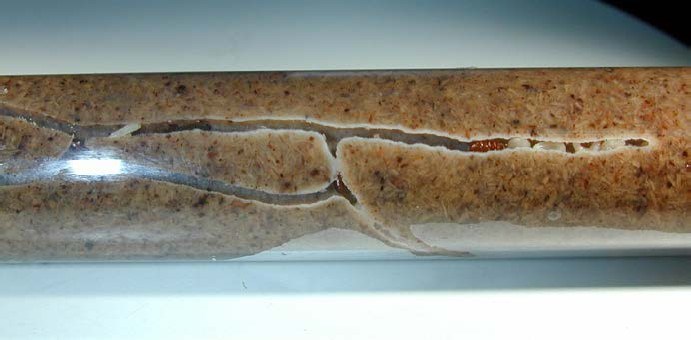
The breeding system of the sugar cane shot-hole borer beetle (Xyleborus affinis) seen here in a glass tube with an artificial culture medium. At the end of a tunnel, you can see a female beetle with larvae. The tunnel walls are covered with a whitish-coloured layer of food and weed fungi.
Photo courtesy Peter Biedermann / Universität Würzburg.
Further information
Ambrosia beetles belong to the bark beetle family, and they are the only animals in nature, aside from leafcutter ants and some termites, that practice agriculture. These insects, which are about 2mm (0.08in) in size, carry fungal spores into their nests and sow them in specially created tunnels in the wood. They then care for the growing fungal cultures that will serve as their food.